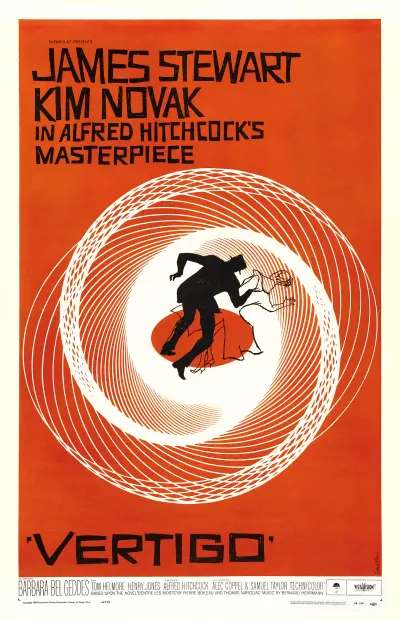
"Vertigo," directed by the master of suspense, Alfred Hitchcock, is a captivating film that delves into the themes of obsession, manipulation, and the illusion of falling, both literal and metaphorical. The story revolves around Scottie, a retired San Francisco detective who suffers from acrophobia, better known as a fear of heights. He is hired by an old friend to keep an eye on his wife, Madeleine, who has been behaving strangely. What initially appears to be a straightforward case of surveillance quickly evolves into a complex web of deceit.
The film truly captures your attention when Scottie begins to follow Madeleine around various locations in San Francisco. Each place is more picturesque and haunting than the last. From the grave of Carlotta Valdes to the vertiginous views from atop the bell tower at Mission San Juan Bautista, these settings are saturated with symbolic meaning. They serve as windows into the past, elusive entities that Scottie and the audience attempt to comprehend. Yet, they remain enigmatic and intangible, adding to the film's haunting allure.
And then there's the twist, the one that delivers a gut-wrenching blow. Madeleine's apparent death by falling from the bell tower is not what it seems. As the plot unravels, we discover a meticulously crafted scheme involving identity deception and guilt. Judy Barton's entrance adds a chilling dimension to the narrative, exposing the dark side of love. Scottie's transformation from a passive observer to an active participant in recreating his lost love highlights the dangerous blurred boundaries between reality and illusion. It portrays how obsession can lead us to recreate and repeat events in our quest to reclaim what we have lost.
One cannot overlook the deeply psychological and emotional themes that permeate "Vertigo." Falling is not just a physical act but also a metaphorical one, representing falling in love, falling from grace, and even falling into madness. Scottie's experience of vertigo is not solely about his fear of heights; it also symbolizes his descent into a spiraling obsession. It is one of cinema's most accurate portrayals of the disorienting and enthralling nature of being consumed by another person.
The film also explores the concepts of control and manipulation. Madeleine appears to be the puppeteer pulling Scottie's emotional strings, but in reality, it is her husband, Gavin Elster, who manipulates them both for his own ends. This highlights the vulnerability of individuals when trust is exploited and how it can distort their perception of reality. Hitchcock's signature visual storytelling techniques beautifully complement these themes, using innovative camera techniques like the dolly zoom to mimic the sensation of vertigo and employing color-coded mise en scène to hint at deeper narrative subtexts.
"Vertigo" is a timeless masterpiece due to its seamless integration of theme, story, and filmmaking technique. The narrative is haunting and ethereal, striking a chord with our deepest fears of inadequacy and loss. Through the relentless pursuit of the unattainable and the reconstruction of the past, the film ingeniously dissects human fragility. It lingers in our minds and poses thought-provoking questions about identity, love, and the true nature of those we obsess over. Like a symphony of tension and release, "Vertigo" resonates with our own experiences of heart-pounding vertigo, leaving an indelible impact on the viewer.

